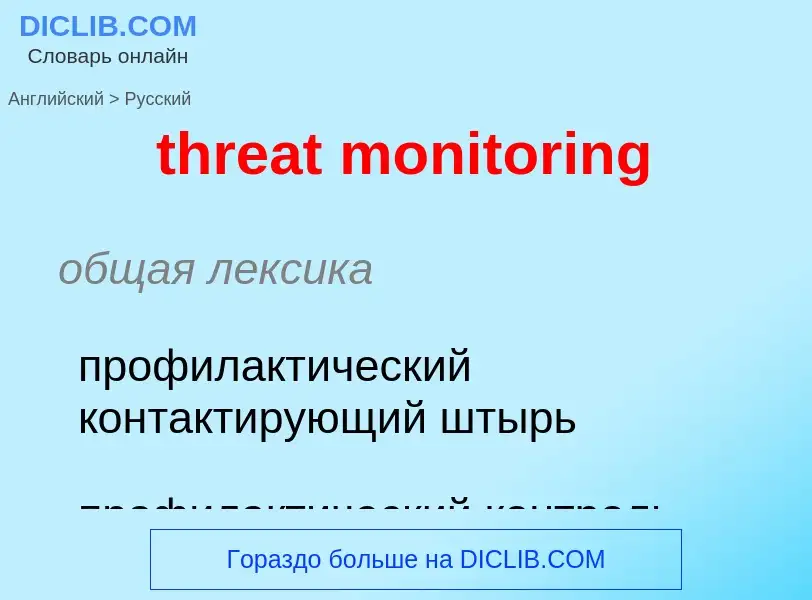Tradução e análise de palavras por inteligência artificial ChatGPT
Nesta página você pode obter uma análise detalhada de uma palavra ou frase, produzida usando a melhor tecnologia de inteligência artificial até o momento:
- como a palavra é usada
- frequência de uso
- é usado com mais frequência na fala oral ou escrita
- opções de tradução de palavras
- exemplos de uso (várias frases com tradução)
- etimologia
threat monitoring - tradução para russo
общая лексика
профилактический контактирующий штырь
профилактический контроль
['mɔnit(ə)riŋ]
общая лексика
регистрация функций организма с сигнализацией об отклонениях от нормы
мониторинг
перманентный контроль
слежение (напр. за состоянием среды)
дозиметрический контроль
дозировка
слежение, контроль, мониторинг
контролирование
контролирующий
контроль
контроль подслушиванием
контрольно-выпрямительный
контрольный
коррекция гироскопа
подслушивание
проверка
управление
управляющий
медицина
дозиметрия
мониторное наблюдение
наблюдение
мониторирование
регулирование
строительное дело
контроль, мониторинг (непрерывное наблюдение переменной)
дистанционный диспетчерский контроль
нефтегазовая промышленность
текущий контроль
Смотрите также
существительное
общая лексика
контроль
подслушивание
радиоперехват
физика
дозировка
дозиметрический контроль
Definição
Wikipédia
Threat modeling is a process by which potential threats, such as structural vulnerabilities or the absence of appropriate safeguards, can be identified and enumerated, and countermeasures prioritized. The purpose of threat modeling is to provide defenders with a systematic analysis of what controls or defenses need to be included, given the nature of the system, the probable attacker's profile, the most likely attack vectors, and the assets most desired by an attacker. Threat modeling answers questions like “Where am I most vulnerable to attack?”, “What are the most relevant threats?”, and “What do I need to do to safeguard against these threats?”.
Conceptually, most people incorporate some form of threat modeling in their daily life and don't even realize it. Commuters use threat modeling to consider what might go wrong during the morning journey to work and to take preemptive action to avoid possible accidents. Children engage in threat modeling when determining the best path toward an intended goal while avoiding the playground bully. In a more formal sense, threat modeling has been used to prioritize military defensive preparations since antiquity.


